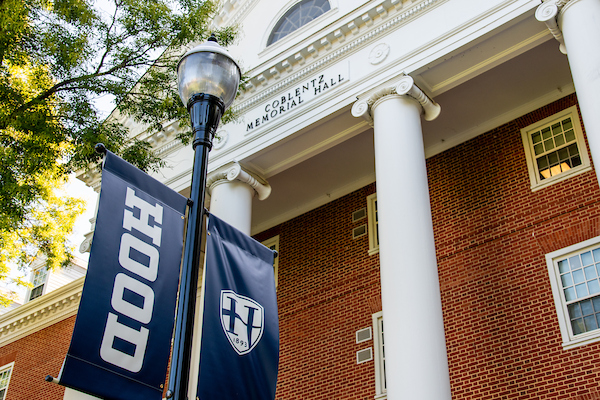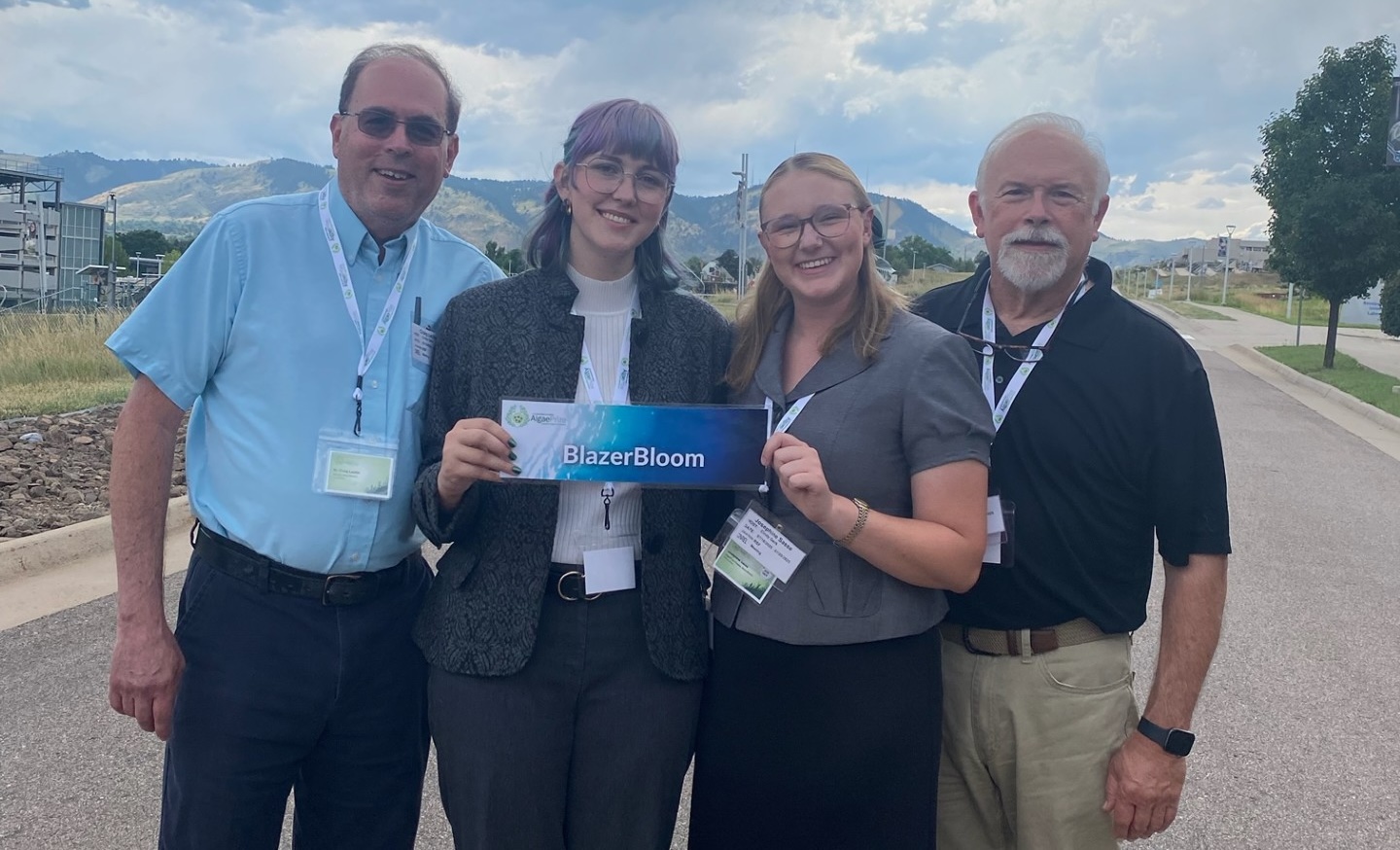Electron Microscopy across the Disciplines at Hood
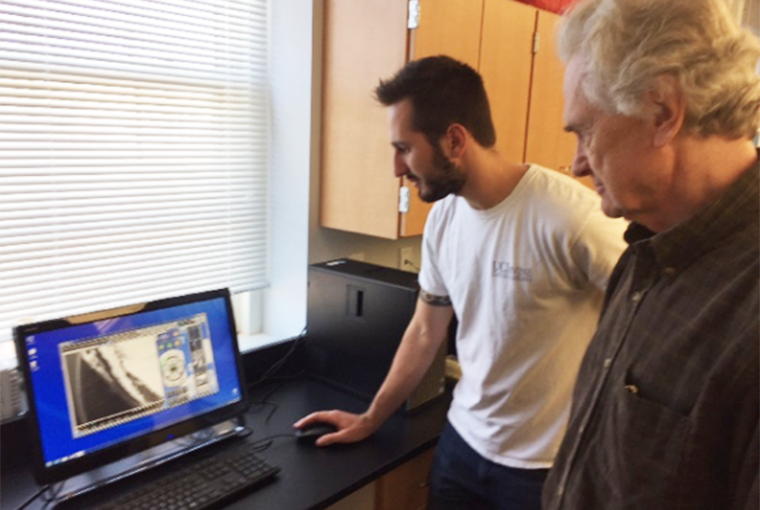
Alex Jarnot and Phil Berneberg discuss the structural details of ceramic glazes while viewing them with the SEM.
By Drew Ferrier, Ph.D., Professor of Biology and Director of the Center for Coastal and Watershed Studies
Scanning electron microscopy (SEM) provides a close-up look of the world around us. Hood’s Center for Coastal and Watershed Studies is fortunate to have acquired such an instrument and offers it for use by students and professors from all disciplines.
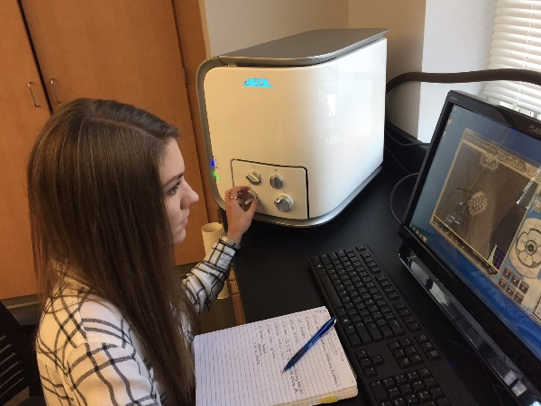
While a traditional light microscope can magnify objects up to 1000 times, our SEM is capable of zooming in to see fine structural details at 30,000x or more! Unlike most types of microscopes, a SEM uses an electron beam to illuminate the surface of a specimen, rather transmitting images by passing electrons through the sample. Certainly microscopes are used every day in biology classes, but did you know that at Hood electron microscopy can be used by students and faculty from a variety of disciplines to inform their studies?
For example, Philip Berneberg, a geologist, ceramics engineer, and adjunct
professor in the art department, and Alexander Jarnot, an Honors student studying the physical and chemical properties of ceramic glazes, used the SEM to gain insights regarding the surface structure of pottery produced in Hood’s kilns. Claire Hudson, a Center staff member, provided Professor Jenni Ross’s archeology class with an introduction to paleobotany by demonstrating the utility of the SEM to investigate minute plant structures found during archeological digs.
Of course, students in the biology and environmental science programs are putting the SEM to good use as well. All of the students in
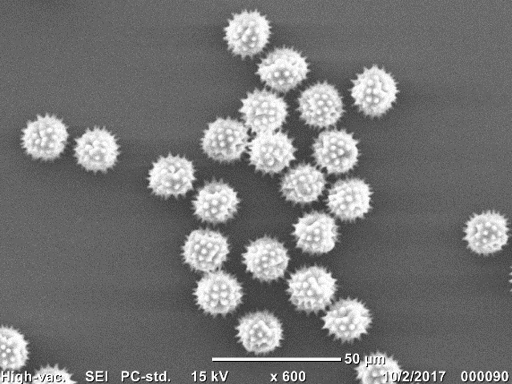
We know that these uses for our Scanning Electron Microscope only scratch the surface of what could be done. Bring us your ideas. We are always looking to help more students and faculty in their investigations.
Media Contact
Mason Cavalier
Media Manager
- Undergraduate
- Center for Coastal and Watershed Studies
- Natural Sciences
- Faculty
- Undergraduate student


